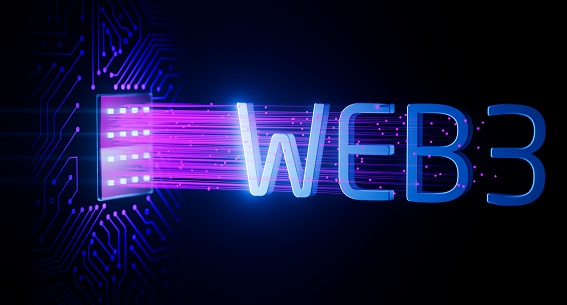Is the Web3 Revolution Ready for the E-Commerce Sector?
The e-commerce sector is growing quickly as internet usage and smartphone adoption increase globally. In 2021, its market size was USD 13 trillion, and by 2027, it is anticipated to be USD 55.6 trillion.
This growth was significantly influenced by COVID-19, which encouraged consumers to shop online while at home. Additionally important factors include ones like hassle-free online shopping. For instance, companies now provide a wide variety of things online for considerably less money than they do in actual stores. Additionally, social commerce has become increasingly popular, with global sales through social media platforms expected to reach USD 732 billion in 2021.
Legacy e-commerce platforms still have some drawbacks, particularly in terms of end-user security and privacy. This increases the need for safer and user-focused solutions.
Web3 rises to the challenge, paving the way for the next paradigm in online retail. Using digital assets like cryptocurrencies and NFTs to make purchases is known as crypto commerce (c-commerce). This has significant advantages and has the potential to totally alter the online buying environment.
Web3 Commerce: What’s in Store?
Though Web3 is the wave of the future, it is already upending e-commerce. NFTs are being used by well-known platforms like Shopify to improve user experience. With the help of its “token gated” commerce model, it now rewards fans and VIPs. Under this program, NFT holders get access to special goods and benefits.
In a similar vein, Flipkart has joined Web3. The recently formed Flipkart Labs is investigating how to deliver metaverse-oriented utility using conventional applications.
How, then, can Web3 benefit eCommerce platforms?
Actually, in a lot of ways. First of all, compared to legacy platforms, blockchain-based shopping platforms are significantly safer. Through the use of sophisticated encryption and distributed storage, they can protect users’ data and privacy. Decentralization also reduces censorship and manipulation.
Second, web3 shopping website development solutions improve the usability and accessibility of online storefronts. Additionally, there are no lengthy registration processes required for internet purchases. They can just use their Web3 wallets to deliver cryptographic signatures as an alternative.
Third, Web3 ecommerce sites can incorporate payment systems based on cryptocurrencies. This greatly speeds the purchasing process and lowers friction. Users won’t have to deal with problems like amount limitations and bank server failures, which frequently occur with fiat-based payments. Additionally, they can purchase goods using cutting-edge digital assets like cryptocurrencies and NFTs.
Fourth, Web3 promotes community-based shopping ecosystems where customers have a real say in how the platform is run and how it will develop. They are able to influence how businesses and service providers make decisions. This is a significant advance above the top-down paradigms that dominated traditional eCommerce.
Overcoming constraints, the future being shaped.
The potential for Web3 to change the way that internet commerce operates is enormous. However, there are certain obstacles in the way of the future.
For instance, the volatility of crypto-assets is a significant worry. Additionally, they provide the industry with some regulatory obstacles that must be solved in order for it to grow sustainably and reliably. Because they seriously impede mass adoption in their absence.
Providing clear and understandable solutions is another difficulty. The majority of modern cutting-edge technology mainly interest tech-savvy people. For instance, the web apps don’t offer user-friendly interfaces that amateurs and non-techies can access, and they aren’t accessible on mobile devices.
On the plus side, though, workable answers are currently appearing. Exeno is one of the platforms that offer accessible c-commerce marketplaces with a variety of goods. These platforms leverage blockchain technology to improve the rich user experience of traditional services. With Web3 wallets like MetaMask and Binance Pay, users may make purchases.
For instance, Exeno has its own currency, the exeno coin (EXN). This gives customers access to extra services like Stake Back, the web3 consulting company substitute for cashback, in addition to safe and private payments. Additionally, users will eventually be able to earn through referrals, providing another incentive.
Yes, that’s the answer.
Is eCommerce prepared for Web3? was the initial question posed in this article. And without a doubt, the answer is a resounding yes.
Even though there are difficulties, continued advances will eventually succeed. In this aspect, the signal is already very strong. What matters most is that it is gradually becoming more audible.
As Naren Ravula, vice president of Flipkart Lab, notes, “Web3 is primed to play a big role in eCommerce. Blockchain can offer practical use cases for firms like FlipKart and others to become digital.
Web3 is gaining experience from legacy systems. New-age platforms like exeno are developing and perfecting creative solutions at the same time. Experience-improving technologies like AR and VR are also growing. Additionally, powerful assets like NFTs are enduring. They will thus create new eCommerce standards jointly and provide consumers more options.



